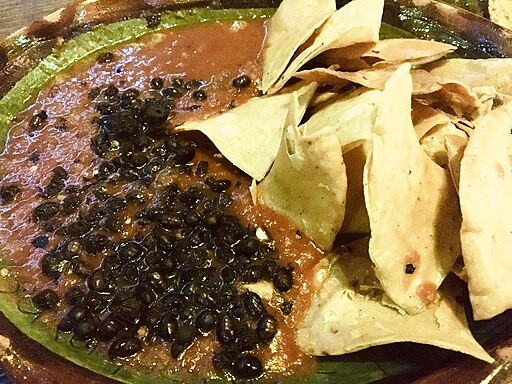Finding ants in food would normally be a reason to call off any meal. However, a recent study suggests that a handful of these insects could be the secret ingredient a person needs.
Ants as Unique Delicacies
Across the globe, ants are widely eaten either whole as a snack, like in a traditional Oaxacan kitchen, or ground up as dish flavoring. This wide consumption of ants is due to the fact that these insects are a valuable source of protein.
In Mexico, ants are either roasted whole as a crunchy snack or ground up to be used to flavor other delicacies. Until now, however, there has been very little scientific analysis of the flavor profiles of these sociable insects.
READ ALSO: Why Are Ant Bites So Painful? Unveiling the Fascinating Behaviors of Its Crafty Jaws and Stingers
Exploring Ant Flavor
At San Diego State University, experts discovered that different ant species could have a wide range of interesting flavor profiles. For instance, common black ants have a vinegary or acidic taste, while native chicatana ants have a nutty roasted smell.
In their study, the research team used a technique called gas chromatography-mass spectrometry and an olfactometer to investigate the volatile chemicals which give ants their distinct flavor. Professor Changqi Liu and his colleagues discovered that common black ants possess a pungent, sharp vinegary flavor. This is brought by the high amounts of formic acid which also gives the ant bite its painful sting.
Meanwhile, chicatana ants do not secrete any formic acid, so they have a nutty, woody, and fatty flavor instead. According to the research team, the fatty flavors are due to the presence of chemicals known as aldehydes, while the nutty note comes from pyrazine which is the same compound formed in cooking bread. A type of pyrazine is actually used by chicatana ants as a trail pheromone to help other ants follow their path.
There is also the weaver ant which was found to have a totally different set of flavors. Analysis of their chemical compound reveals that this ant species has a nutty, sweet and caramel-like aroma. However, experts warn that this insect can have an aftertaste of hay and urine-like flavors due to a high amount of amines, a different form of ammonia. Still, Prof. Liu does not think that these off-flavors will be too much of a hindrance to ants becoming a sought-after delicacy.
Professor Liu and his colleagues hope that understanding the flavor of ants will encourage people to use them in more dishes, like prawns with ant seasoning. If there are desirable flavors, experts can explore ways to promote their formation and if there are undesirable ones, they can find ways to eliminate or mask these flavors.
For those planning to include ants in their recipe, experts reminded them to choose their ants carefully. Some are delicious, but others can have a urine-like aftertaste and can also trigger shellfish allergies.
In this research, the scientists discovered that ants contain high levels of a protein called Tropomyosin. This compound is one of the major triggers for shellfish and crustacean allergies, which means that ants may not be safe for anyone with a seafood allergy.
RELATED ARTICLE: Ants as Bio Diagnostic Tool in the Future? These Tiny Creatures Can Detect Cancer in Urine
Check out more news and information on Ants in Science Times.















